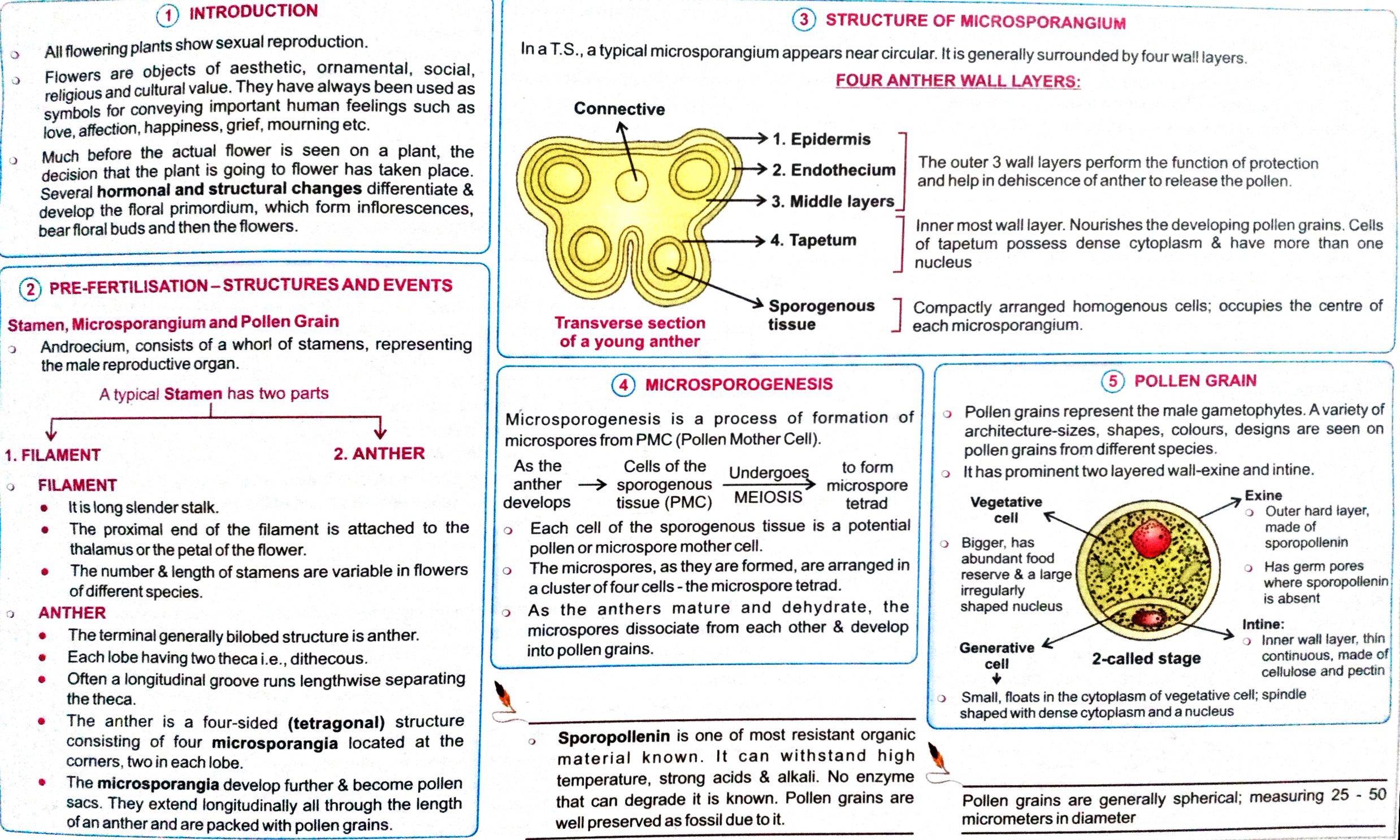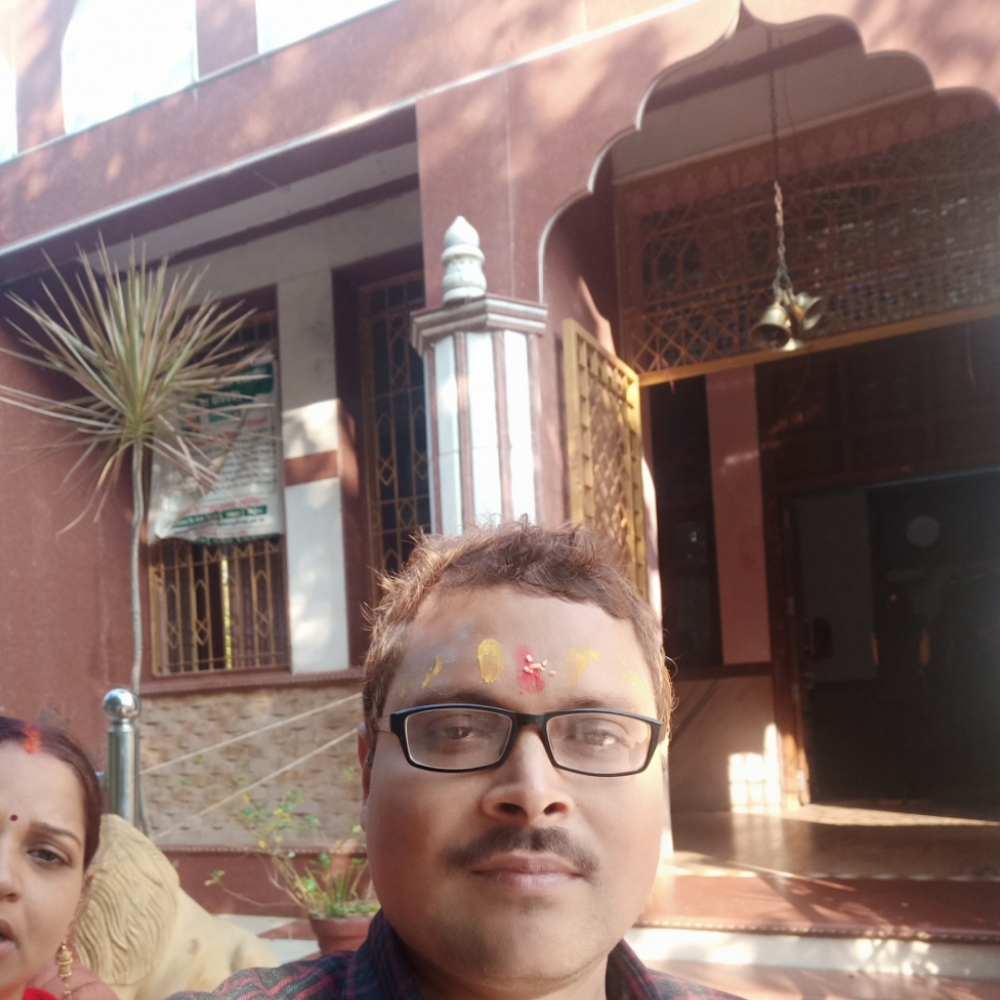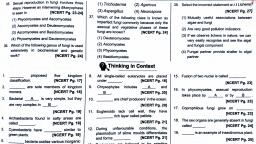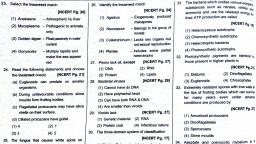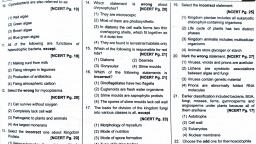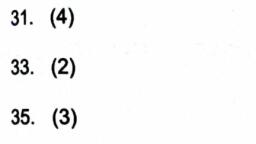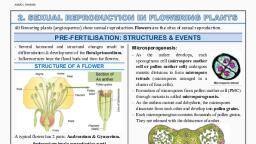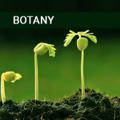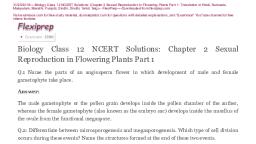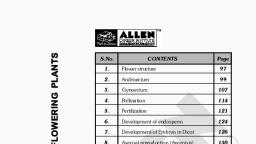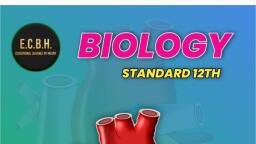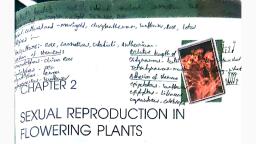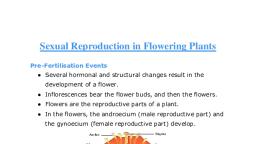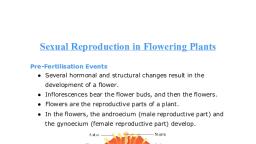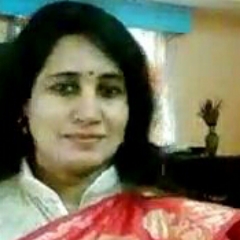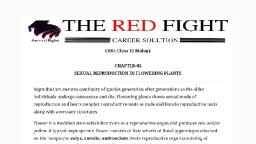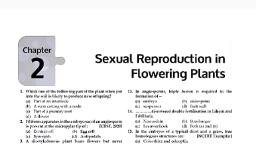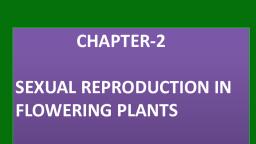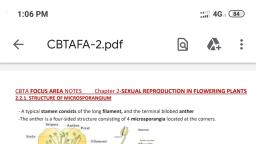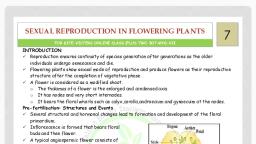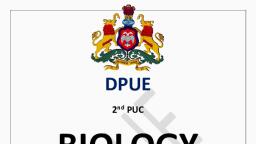Page 1 :
Qo, , a, , :, , > Androecium, consists of a whorl of stamens, representing, | the male reproductive organ., , | Atypical Stamen has two parts, , 1. FILAMENT 2. ANTHER, , o, , sacs. They extend longitudinally all through the length, __ ofan anther and are packed with pollen grains., , , , , , , , , , @ INTRODUCTION, , All flowering plants show sexual reproduction., , Flowers are objects of aesthetic, ornamental, social,, religious and cultural value. They have always been used as, symbols for conveying important human feelings such as, love, affection, happiness, grief, mourning etc., , Much before the actual flower is seen on a plant, the, decision that the plant is going to flower has taken place., Several hormonal and structural changes differentiate &, develop the floral primordium, which form inflorescences,, bear floral buds and then the flowers., , , , , , , , , , , , , , , , , , , , , , , , @) PRE-FERTILISATION -STRUCTURES AND EVENTS, , tamen, Microsporangium and Pollen Grain, , FILAMENT, , \tis long slender stalk., , The proximal end of the filament is attached to the, thalamus or the petal of the flower., , The number & length of stamens are variable in flowers, of different species., , ANTHER, , The terminal generally bilobed structure is anther., , Each lobe having two theca i.e., dithecous., , Often a longitudinal groove runs lengthwise separating, the theca., , The anther is a four-sided (tetragonal) structure, consisting of four microsporangia located at the, corners, two in each lobe., , The microsporangia develop further & become pollen, , , , (3) STRUCTURE OF MICROSPORANGIUM, , InaT.S., a typical microsporangium appears near circul, , ar. Itis generally surrounded by four wall layers., , FOUR ANTHER WALL LAYERS:, , Connective, , 1. Epidermis, 2. Endothecium, 3. Middle layers, , 4. Tapetum |, , , , Sporogenous, Transverse section tissue, , of a young anther, , () MICROSPOROGENESIS, , Microsporogenesis is a process of formation of, , microspores from PMC (Pollen Mother Cell)., , As the Cells of the Undergoes to form, , anther —> sporogenous microspore, develops tissue (PMC) MEIOSIS tetrad, , Each cell of the sporogenous tissue is a potential, , pollen or microspore mother cell., , The microspores, as they are formed, are arranged in, acluster of four cells - the microspore tetrad., , As the anthers mature and dehydrate, the, microspores dissociate from each other & develop, , into pollen grains., , , , Sporopollenin is one of most resistant organi, material known. It can withstand hig, , Q, , temperature, strong acids & alkali. No enzyme —~, that can degrade it is known. Pollen grains are, , well preserved as fossil due to it., , , , , The outer 3 wall layers perform the function of protection, and help in dehiscence of anther to release the pollen., , Inner most wall layer. Nourishes the developing pollen grains. Cells |, of tapetum possess dense cytoplasm & have more than one, , nucleus, , Compactly arranged homogenous cells; occupies the centre of, , each microsporangium., , ©) POLLEN GRAIN, , Pollen grains represent the male gametophytes. A variety of |, architecture-sizes, shapes, colours, designs are seen on |, pollen grains from different species., Ithas prominent two layered wall-exine and intine., , Exine, , , , , , , , , , Vegetative }, eal > Outer hard tayer, |, , . made of, Bigger, has sporopollenin, abundant food, reserve & a large 2 Has germ pores —, irregularly where sporopolienin, shaped nucleus is absent, , Intine:, , > Inner wall layer, thin, cell continuous, made of, ¥ cellulose and pectin |, , Smail, floats in the cytoplasm of vegetative cell; spindle, shaped with dense cytoplasm and a nucleus, , Generative, , 2-called stage, , , , ic, h, , a, Pollen grains are generally spherical; measuring 25 - 50, micrometers in diameter
